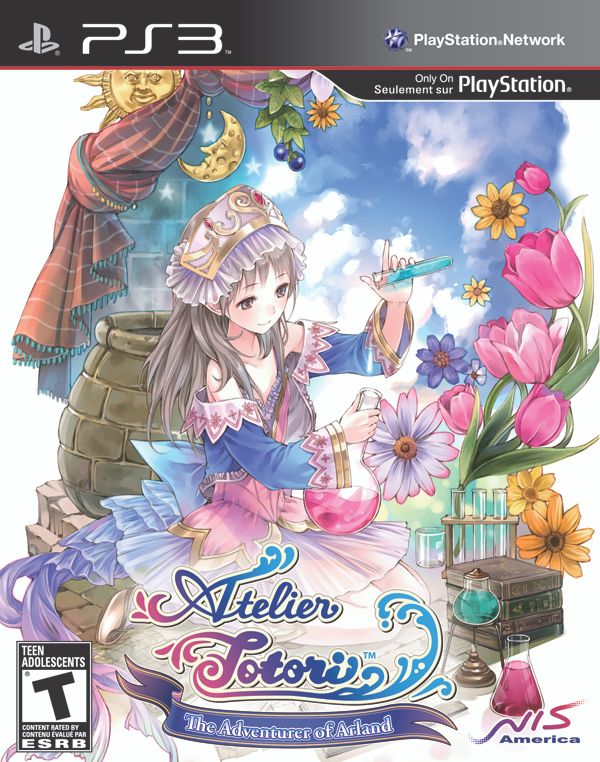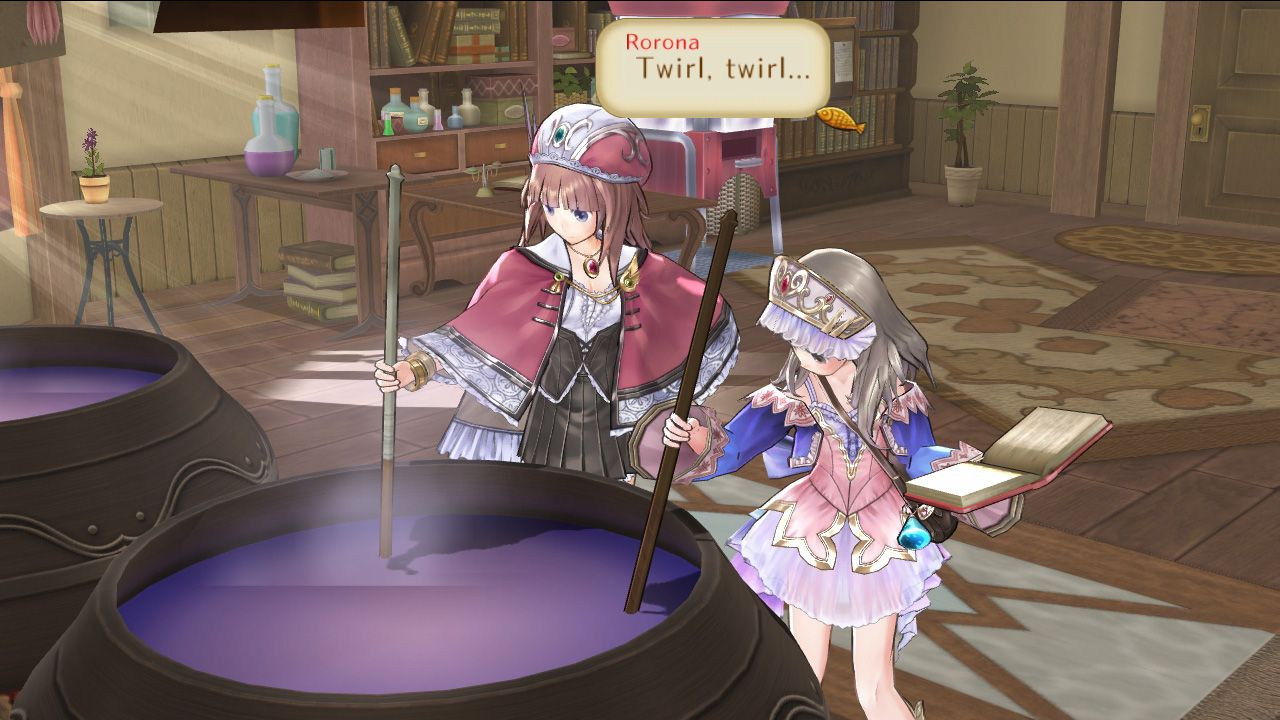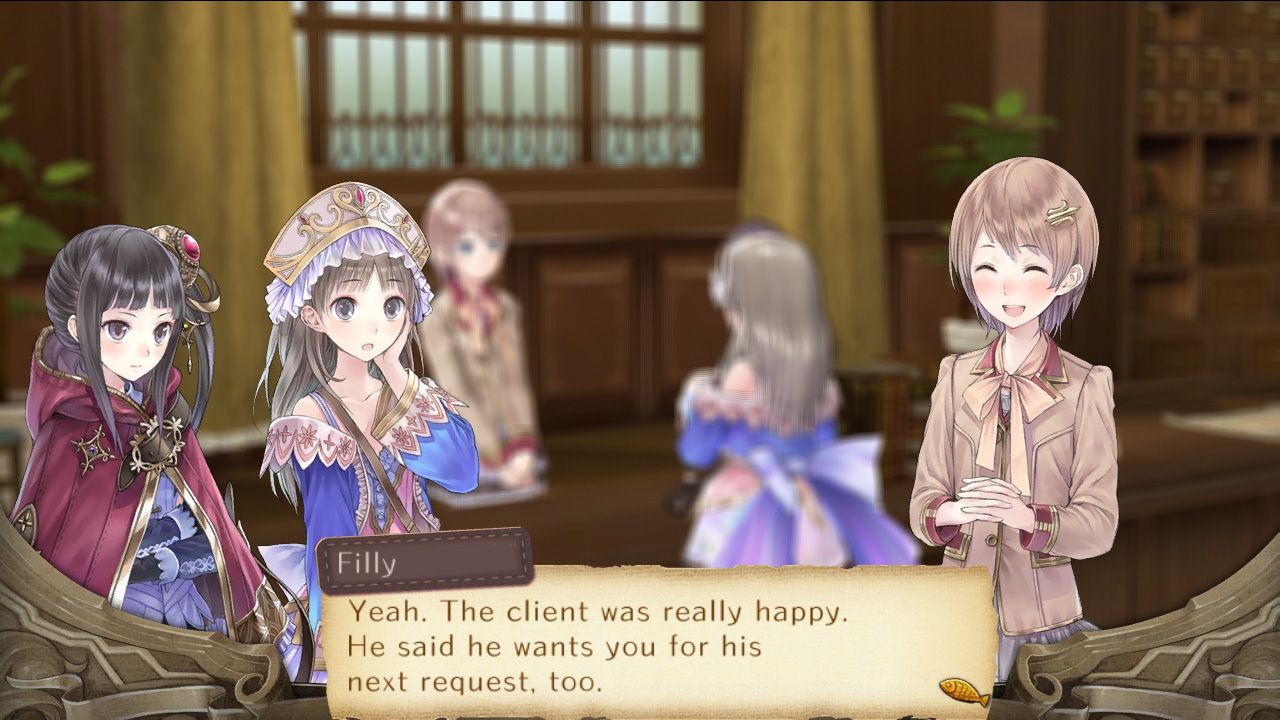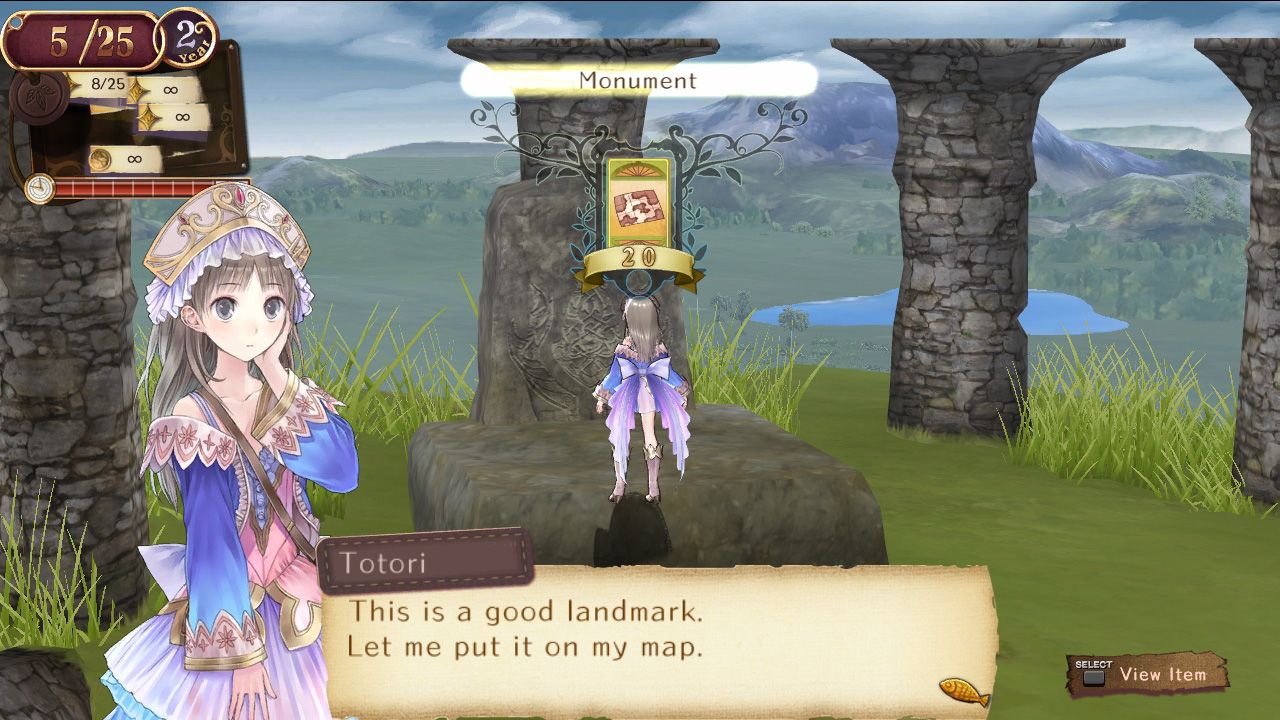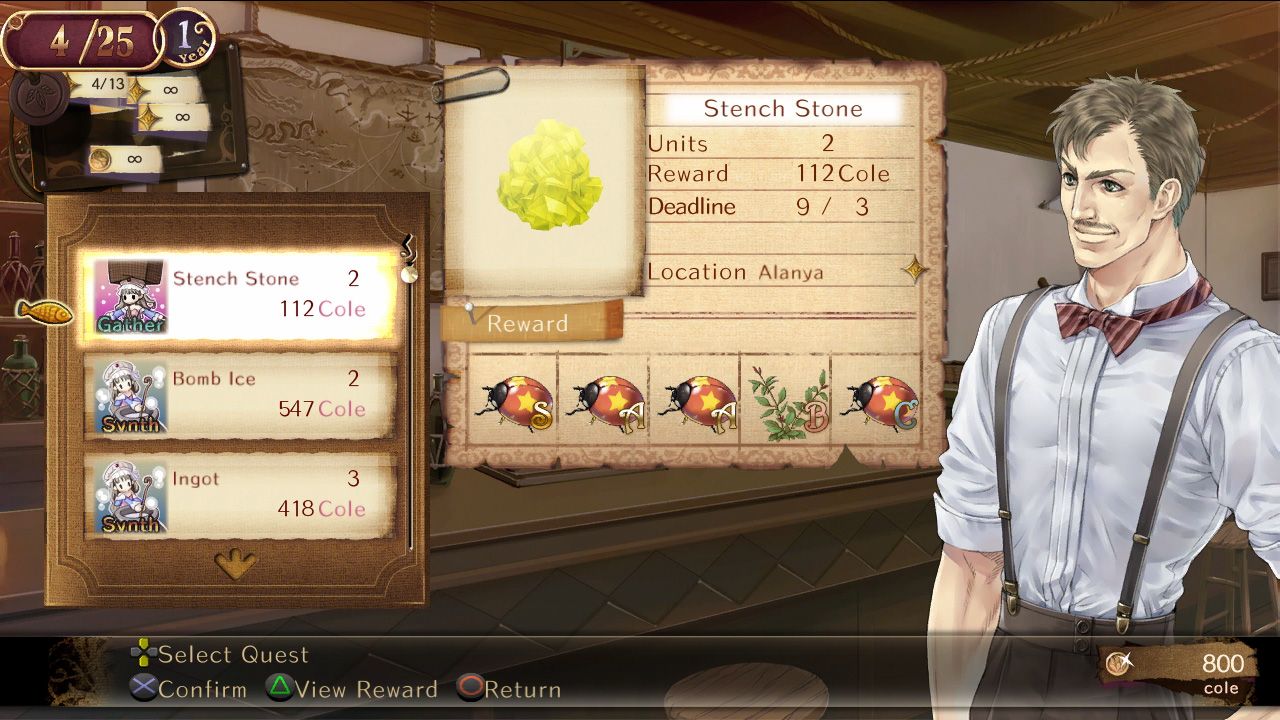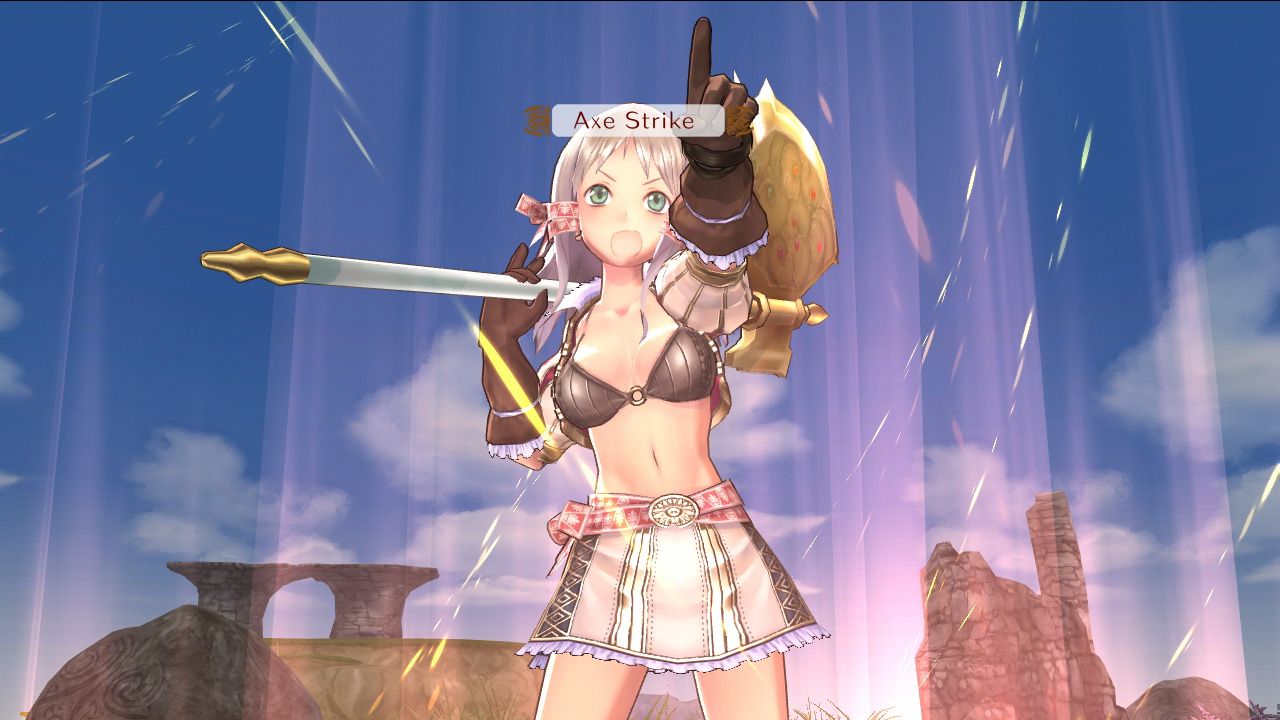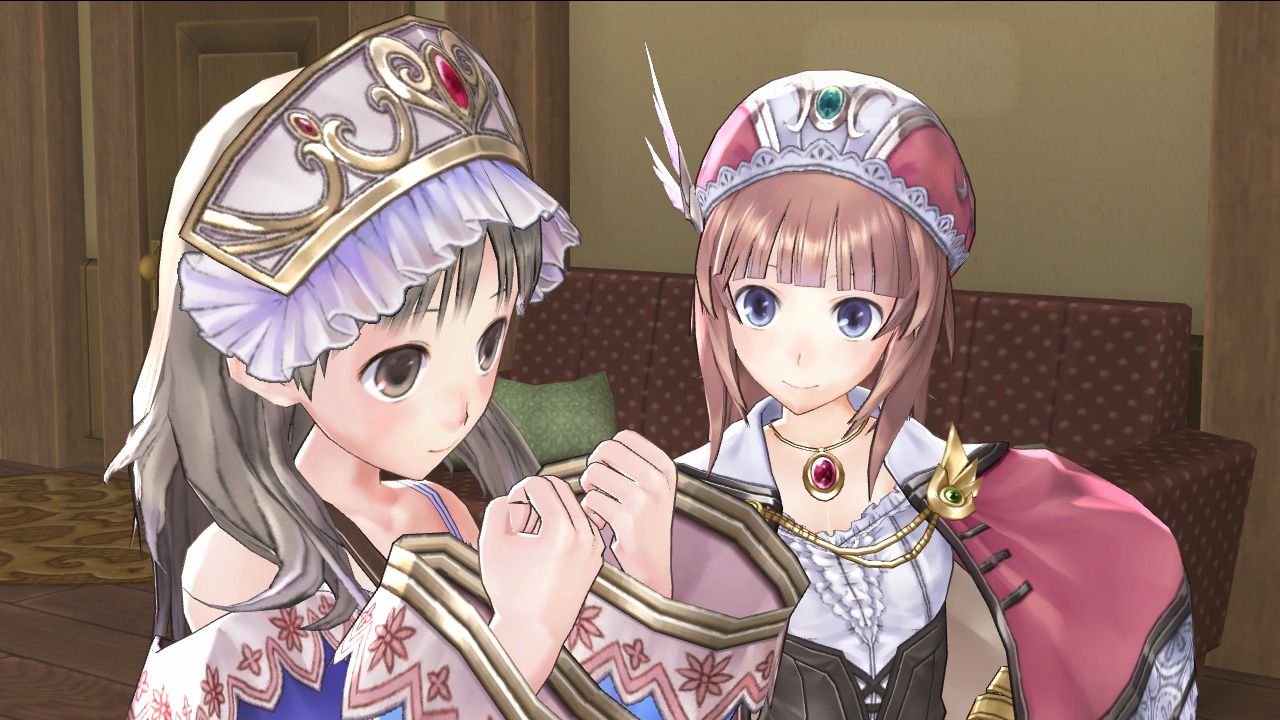I’m a firm believer in the point of view that not all games can or should be about saving the world from some impending apocalypse. That basic premise, which fills 90% of the games out there, is so overdone. That’s why it’s so refreshing when a title comes along that you can just sit back and enjoy instead of gripping your controller so hard with you sweaty hands that you seem on the verge of crushing it into a black hole.
Atelier Totori: The Adventurer of Arland fits that bill perfectly. This follow-up to last year’s Atelier Rorona improves a bit over its predecessor while still maintaining the air of semi-casual non-chalance that gives such a fresh feeling amidst all the heavy, must-save-the-world games that we see all too often in this genre and just in general.
For those new to the Atelier franchise, the concept is simple – there’s a goal for the entire game which you progress to over time as you play by completing quests which involve either gathering, alchemy or battle. That’s pretty much it. Of course, there’s a story to follow as you go through the game, and this one revolves around Totori (pronounced TOH-toh-ree, note the emphasis on the first syllable).
Years ago, her mother, who was an adventurer, disappeared. Her mother never returned home and left her, her father, and her sister, Cecillia (Ceci), to fend for themselves. After her mom left, Totori came into contact with a famed alchemist from Arland and began to learn the art of synthesis, which is a rare talent in the realm. Eventually, though, she wonders about her mom and, in her heart, believes she’s still alive somewhere. Totori sets out to become an adventurer like her mom and uncover the truth behind her disappearance and get answers about why she left in the first place.
To be honest, that sounds pretty heavy, but it doesn’t feel like it as you experience the story unfold through the first hours of the game. Totori is a happy-go-lucky child who tends to have a wiser head on her shoulders than most of the other characters – young or old – in the game. In fact, I found myself smiling many times after Totori delivers a line of dialog with a twinge of sarcasm and seeing the character on the receiving end not give her the time of day. There are some pretty great comedic moments due to the juxtaposition of the general ditziness of other characters as opposed to Totori’s solid disposition.
Totori has to basically prove that she’s worthy of being an adventurer over the course of five years (broken into two large time periods – one three years, and the other two years). After she acquires her adventurer’s license, she has to prove that she’s worthy of it or, three years later when it’s up for renewal, she could be denied. That’s where you come in, guiding her through the questing and exploring that makes up the bulk of helping Totori find her way.
The dialog and voice acting is pretty spot on, at least for the main characters. Totori’s actress especially hits a high note with me, with Ceci and Mimi not far behind. Some of the side characters suffer from either faulty acting itself or just general over-acted and oddly-written dialog, but at least that isn’t very prevalent throughout the course of the game, and some of it is entirely optional. There is some very basic, or obvious, dialog, and the typical hiccups that bother me about games like this is still there - plot points will be repeated, goals will be emphasized, much of it is suggestive (skirt flipping? really?) and a lot of it can be very, shall we say, simplistic.
The rest of the audio, while enjoyable at first, becomes extremely repetitive given the amount of time you spend in certain areas. While you do change location – and thus background music – during the course of the game, you spend enough time in each location that things really start to grate into the back of your head. So, the voice acting and dialog is mostly excellent, but the background music can easily become a nuisance.
What is really great is the little graphical and animation improvements over Rorona. While the two games maintain the same general graphical style, Totori is animated better. Totori herself is much better designed and her model seems more lifelike and intricate than Rorona’s did. Even when you see Rorona in this title, you can see the sharp difference between the two characters, and I’m not just talking about their personalities. Little things like Totori jumping and swinging her wand in the field are much better animated here and it all really meshes together.
A couple areas of disappointment in general with the visuals, animations and environments, though, involve the camera (or lack thereof) and some misbegotten collision detection. First off, there is no free-form camera. You can’t rotate the camera to check out your environment or get a better view of impending dangers. This is especially noticeable in various areas where enemies are hidden behind rocks, plants or land formations. Secondly, invisible walls that cause a collision incident, as well as it being difficult to judge when to start swinging Totori’s wand to gain the initiative in combat, cause some minor frustration at times.
Generally speaking, though, the environments are much more open, less linear and provide more to do than they did in Rorona, and that’s a huge improvement. Are they more detailed? Not really. But, they do provide more incentive for prospective adventurers.
As mentioned, you help Totori prove herself by guiding her on quests. These quests can come in many different forms, some of which are given out directly by NPCs and others (like the exploration ones) just listed in your journal as you find them. Typically, though, doing the NPC quests is enough to keep Totori well afloat as you progress through the months.
Like previous games, you have quests where you hunt monsters, quests where you gather materials straight up and quests where you use those materials to produce new products by means of synthesis. That alchemy is the backbone of the Atelier franchise, but it seems to take sort of a back seat here, as the main focus is on the objective of becoming an adventurer, whether it’s primarily through item synthesis or not.
In the previous game, you had roughly three in-game months between goals, and the entire game spanned three years. This did make completing quests a bit tricky. This time around, you’re given more freedom in terms of time. The first goal you must meet isn’t for three years. This is a good thing, as it feels more “sandbox style”, if that term can even be applied to this game. However, there are some drawbacks that may, in my opinion, outweigh the good.
First off, there were several times in the first 10 hours or so that I had no idea what to do. I’d be going places randomly to try to trigger some event that would progress the story overall. The problem is that story events are triggered on specific days, so until that happens, you don’t really have any idea it’s coming and you don’t know how long you have to keep doing what you’re doing before you get to another story segment. At points I even thought I was doing something wrong because it was just the same set of quests over and over again. The second issue is directly related to the lack of short-term goals. While you do have quests to complete, which are goals in themselves, the progression of the story kind of feels all over the place, and you’re not sure what to do when. It’s even very easy to lose track of time.
Which brings us to another issue, unlike the previous game, time passes when you do everything. Journey to a field location, gather some items, fight some enemies, travel back to town, sleep to regain your health, synthesize items – everything you do takes time. While this flows nicely with the fact that you have large segments of time to get through, it also feels like kind of a waste.
So, on the one hand you have a more “open” game structure, but on the other it feels like things are kind of all over the place, making it easy to get distracted and lose track of that time that you could have spent better had you had a more concise time-related goal.
But, moving on from that, the battles in Totori are altogether unremarkable, once again. Unfortunately, the battle system is very simple and not very deep. Although, leveling up is good for more than just fighting harder enemies – you actually tick off points toward your adventurer’s license renewal when you reach certain level milestones. The “cover” mechanic is still here. With Totori being the weakest in the party generally, each of her friends can jump in front of her and take the brunt of the attack instead of her, depending on if you hit the L1 or R1 shoulder buttons when prompted.
You encounter enemies on the field screen and the battles are simply turn-based, but you do score items and are able to complete kill quests. There are some rather uncharacteristic difficulty spikes at certain points, and if you’re not ready for them they can catch you by surprise.
Also quite enjoyable in the game is being able to travel around and to farther distances than before. Of course, you revisit the city of Arland, Rorona’s stomping ground, and you even get to build a boat and travel across the sea. So the scope of Totori is much wider than previous titles. At each location you also, of course, have your “home base”, where you can store items and just perform your synthesis magic.
Overall, Totori is a slight upgrade over Rorona, but unfortunately not by much. It has better animation, a bigger scope and feel, more freedom and some tweaks that really make everything work smoother (like hitting the select button to travel instantly between areas). The voice acting is generally great, but sometimes spotty and, overall, the entire experience feels like a weekend getaway at the beach – stress-free relaxation by the water drinking an alcoholic beverage with a little umbrella in it. There still are some things that, in general, Gust needs to work on to push the franchise to the next level. The battles really need a lot of work, and frankly, that was a huge disappointment for me jumping from Rorona to Totori – I figured they would have improved and, in turn, expected more.
Don’t get me wrong, though, I’m a huge fan of the Atelier franchise and I remain one. This is a great game that any fan is going to want to play, especially if you’re not opposed to the more mellow tones and more subdued, personal story. It really plays more like a journey through someone’s life than a “save the world” adventure, and that’s perfectly fine by me. Endearing characters and a charm that trumps just about anything else out there, genre fans won’t be disappointed. There’s a good amount of gameplay and multiple endings, as well, so it’s always worth another trip through. It is an improvement over Rorona in many ways, although nothing really super fantastic. It’s certainly a worthy addition to any JRPG lover’s collection, and a great game for NIS America to have brought over to the West.

